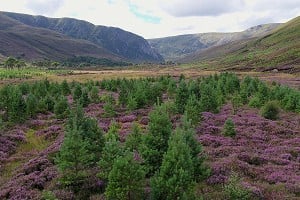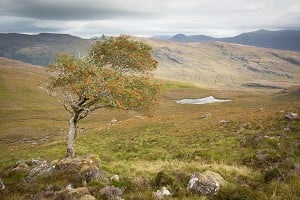
The autumn spectacle of heather in bloom is muted this year due to climate change, say the National Trust, as the impact of last year's hot weather and increased pest activity has turned acres of heather from its usual seasonal purple to a muddy brown.
While Britain's upland habitats arguably suffer from a surfeit of heather and a dearth of trees, the sudden lack of blooming heather does have serious impacts on some wildlife, such as the red grouse and the emperor moth, which in its caterpillar stage relies on the plant for food.
At this time of year hill areas like the Long Mynd in Shropshire and Holnicote on Exmoor are typically awash with a haze of purple.
But this year the National Trust, which manages both sites, has seen up to 75 per cent of the heather in poor health due to a combination of weather and poest damage.
Peter Carty, Countryside Parkland and Gardens Manager for the conservation charity in Shropshire said: "Last year's high temperatures, and subsequent lack of rain, damaged a large area of heather and it is clear from the orangey brown colouration this year that the plants are seriously stressed and unlikely to flower.
"The milder winter also led to an increase in the heather beetle numbers, which are a natural element of the heather ecosystem, as it wasn't cold enough to kill off their larvae. The beetle affects heather by damaging the outer layers of the leaf, making it more susceptible to drought stress.
"In places where heather was sheltered from the extreme or where damp conditions were present, the heather has survived. However, there will be no mass flowering this year."
The team at Holnicote, on the edge of Exmoor, are already working on a solution to help with the land drying out by planting more trees to help slow the flow of water further up the valley. They are also restoring wet habitats such as blanket bogs and mire which hold water in high rainfall and release is slowly in times of drought.
Basil Stow, Area Ranger for the National Trust added: "We are seeing damage across hundreds of acres of heather and on our neighbouring land. One of the unfortunate consequences of the heather suffering is that tougher plants such as Molinia have chance to take hold. Heather is a resilient plant and capable of regenerating from the rootstock or from seed – so we will need to watch and wait to see what happens next year but we are hopeful that it will recover with careful management."
On the upside, it is thought that an unexpected side effect of the prolonged warmer weather could be the proliferation of the heather shield bug, a natural predator of the heather beetle.
































































Comments